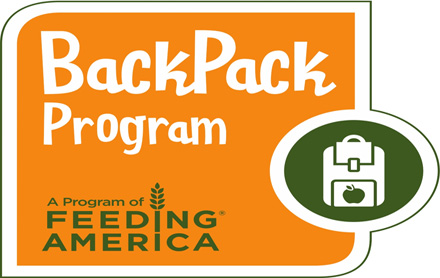At around 6ish each morning, my internal clock signals that it’s time to get up and start our day. Having a school-aged child means that mornings can be quite hectic trying to get everyone dressed, fed, and out of the house on time. While we’re getting better at figuring out how much time our children need in the morning, it’s been a bit of a struggle. Some days, my son has had to eat quickly or even bring his breakfast to school so that he is not late. When he hasn’t had a proper meal in the morning, we see the effects displayed in his behavior. Can you imagine what it’s like for children who live in food insecure households? How difficult it must be for them to concentrate on reading and writing when they are thinking about their empty tummies?
According to the USDA’s most recent stats, over 16 million children lived in food insecure (low food security and very low food security) households in 2010. Feeding America, the nation’s leading domestic hunger-relief charity, serves nearly 14 million children, 3 million of which are 5 or under.
The statistics are astounding, and yet, the issue isn’t as far removed as you may think. Last year, I visited my local food bank and was shocked at how pressing the issue is right here in Orange County. Thankfully, organizations like Feeding America in partnership with food bank network members, are working to make a difference.

One of the ways Feeding America fights child hunger is through it’s backpack programs. Children who qualify for free or reduced meals through the National School Lunch Program get their nutritional needs met during the week. But come the weekend, children living in food insecure homes may suffer over the weekend, and come Monday morning, have difficulty concentrating due to hunger. Feeding America’s BackPack Program helps children receive nutritious, easily prepped food to last them thogh the weekend. Bags are assembled and distributed to children at the end of the week so they can take home in their backpacks, which is a brilliant and inconspicuous way for children to receive meals without having to explain their situation to peers.
How can you help make a difference this Fall?
The USDA has a fantastic guide filled with ideas to make a difference in your community. Here are just a few that I believe our family can participate in to help fight child hunger:
1. Volunteer at our local food bank, food pantry, or soup kitchen.
2. Donate to our local food bank/food pantry
3. Organize a local food drive to donate to our local food bank
4. Plant a school garden
Walmart recently launched it’s Fighting Hunger Together Fall Initiative. We’re in the midst of this five-year campaign in which Walmart is using it’s resources to help fight hunger.
How is Walmart fighting hunger?
1. Walmart donates billions of pounds of food from it’s stores, distributions and Sam’s Club locations
2. Walmart contributes financially through grants that support hunger relief organizations at the local, state, and national levels.
3. Walmart collaborates with the government, food manufacturers, and other foundations to get a better understanding of the issue
4. Walmart mobilizes it’s customers and associates to help in the fight against hunger.
Over the course of the month, I’ll be highlighting ways to help fight our nation’s hunger problem. I’d love to hear what you’ve done to help fight hunger in your home town.
I participate in the Walmart Moms program and am compensated for my time and honest opinions.
- Discover Luxury at Sonesta Irvine: Your Ideal Staycation - August 8, 2024
- CHOC Walk Returns to the Disneyland Resort – Special Events and Ways to Support - June 28, 2023
- Beastly Ball Returns to the Los Angeles Zoo - May 8, 2023

Leave a Reply